We often look up to the far reaches of the heavens—with our own naked eyes, through powerful telescopes, or high-tech space probes—to see if life exists in other planets. Well, we do not have to look at the stars. We have our very own alien world here right beneath the waves. Under the sea are millions of mysterious creatures beyond our wildest imagination, a majority of which are still undiscovered.
A few weekends ago, together with our friend Loraine and Department of Environment and Natural Resources marine biologist Aljohn Sajol, we decided to dive at Buyong Marine Station, the house reef of Scuba Star Dive Services.
Our first stop was the omnipresent heart-shaped structure about 20 feet from the surface. A lot of first-time divers always visit this interesting feature. Overgrown with corals and sponges, the—ahem—Heart of the Ocean (pardon my pun) is a small bar or pub for fish and other marine creatures.
On this day though, this marker was an “indicator” of an equipment failure. Sweetie’s buoyancy control device (BCD)—an inflatable vest that allows the diver to control his or her buoyancy—began free-flowing. That means, it began inflating uncontrollably. With the bladder consistently filled with air, Sweetie was unable to sink below the waves. We had to disconnect the inflator hose from the air cylinder and fully deflate the BCD so she’d attain negative buoyancy.
We would have loved to go over the lip of the wall. However, because Sweetie is not exactly confident in controlling the BCD manually, we stayed at the shallow part of the reef—around 40 feet. Bummer! But safety is more important here than personal wants. If her BCD free-flowed while we were in deep water, she would have shot straight up, which could definitely result in serious injuries due to decompression sickness. Yikes!
So, we just stayed on the shallow water to admire the coral reef. Marine biologist Aljohn took videos and photos of the corals for future study and reference.
As you can probably tell, our first dive was a bit disappointing due to equipment failure. But we did see some interesting things. For example, we found a bartail goatfish (right) and a pale zigzag wrasse (left) hunting together for food. The goatfish is named so due to its pair of thin, pointed chin barbels, resembling a goatee. The barbels are filled with sensory organs, and they are used to probe the sand for food.
The zigzag wrasse is a common reef fish, but has an interesting characteristic. It is born female, but later on, it has the capability of changing into a male!
It’s really cool to see two very different species of fish working together to achieve a common goal. Why can’t we humans do the same?
P.S. Thank you very much for the Fish ID assistance, Aljohn!
On the way back to shore, we spotted a coral head with embedded Christmas tree worms. These invertebrates got their name from the colorful Christmas-tree-like structures jutting out of their tubular bodies. These structures are actually tentacles that are used not just to catch prey but also to breathe.
Christmas-tree worms do not provide any commercial value, but they are favorite subjects of underwater photographers.
Above us, floating at the surface of the water, a group of free divers clung to a buoy. They’re incredible sportsmen, being able to dive hundreds of feet with a single breath of air. We have a lot of respect for free divers.
We had a hot, filling, and cheap roadside lunch, silently hoping that our second dive after our one-hour surface interval would be better. It turned out, according to our guide, that Sweetie’s BCD’s inflator button is broken; that’s why air from her cylinder is constantly flowing inside the bladder. We would have to get her BCD fixed.
With Sweetie outfitted with a functional rental BCD, we were ready to explore the wall on our second dive. As we descended to 60 feet, we could see splotches of algae and coral growing together. This “farm” might have been grown and cared for by damselfish, known to be the farmers of the reef.
A little further down at 80 feet, growths of gorgonians, or sea fans, adorn the wall. They are delicate coral formations, so we had to be careful not to touch or bump into them.
We also came upon a bunch of bright blue Chromodoris nudibranches, carnivorous and poisonous sea mollusks that do not have shells. Often, we see them singly, but this was the first dive which we saw them in a group.
These species’ regular diet is sponges. This is probably why they’re amassing on this coral, feeding on the tiny bits of sponge growth.
Further on the wall, we saw a trio of Synaptidae sea cucumbers. They lack tube feet, retractor muscles, tubules, and respiratory trees. Unlike other sea cucumbers, which are sluggish to the point of almost immobile, Synaptidae sea cucumbers move quite a lot. They often feed on elephant ear sponges.
Here’s a closeup of the tentacled mouth of a Synaptidae. It looks like something that comes out of a horror monster movie. Hahahaha!
The sea cucumber feeds at night, and it processes its food rather quickly. In fact, food passes through its digestive tract in less than an hour!
That’s a really beautiful sea fan, don’t you think? The fuzz that covers its branches are actually tiny tentacles. Those tentacles are microscopic polyps that make up the entirety of the coral. At night, the gorgonian takes a completely different look as polyps swell and extend their tentacles to catch microscopic plankton for food.
The expanse of the sea fan is actually the hard calcium exoskeleton that the coral produces and grows on.
Okay, let’s take a nap. Zzzzzzzz! Nah, I’m just practicing my vertical buoyancy with my breathing and without moving my fins.
Having good buoyancy is essential for a scuba diver. With good buoyancy, you can move effortlessly, use less air and energy, and prevent damage to corals.
One of the most regal—and dangerous—residents of the reef is the lionfish. Those spines are filled with venom, which makes them dangerous to anything that attempts to prey on them. Lionfish stings are not fatal unless the victim has severe allergies to its toxins or has a weak immune system. However, the stings are extremely painful and may cause nausea, fever, breathing difficulties, numbness, and other symptoms.
Fortunately, lionfish are not aggressive towards divers. As long as you keep a safe distance and you don’t touch them, you’ll be safe.
In other areas such as the US East Coast and the Caribbean, lionfish are a serious invasive species that needs to be eradicated because they voraciously eat local fish. In fact, in affected areas, the National Oceanic and Atmospheric Administration has started a “Lionfish as Food” campaign to control its population. Properly filleted and prepared, lionfish are safe to eat.
Another dangerous and venomous denizen of tropical reefs is the scorpion fish. We saw a large pink one hiding motionless on a sponge. We believe he’s waiting for an unlucky fish to pass by so he can have a snack.
The dorsal, anal, and pelvic fins of the scorpion fish have venom glands. A sting can be massively painful and can result in weakness, fainting, vomiting, nausea, and more. Fortunately, the animal is not aggressive unless molested.
Like frogfish and stone fish, scorpionfish are masters of disguise. They can mimic the appearance of corals, sponges, and other structures to help them hide from and hunt for prey.
On the way to shallower water, we saw a large blue puffer observing us from the safety of his home. If threatened, puffer fish can rapidly inflate their bodies to thrice their size to startle, frighten, or discourage prey.
Pufferfish, locally known as butiti, are some of the most toxic fish in the world due to the tetrodotoxin in their organs. There were many cases of Filipino fishermen—and their family members—who perished due to improper preparation of pufferfish. In Japan, however, specially trained and licensed fugu chefs prepare the fish as a delicacy.
A 5-foot long banded sea krait swam up to the surface to take a breath. Sea kraits are among the most venomous snakes in the world; some species’ venom is said to be more potent than a cobra’s! Thankfully, sea kraits are shy, docile, and reclusive. In fact, children in New Caledonia often play with them.
Note the tail of the snake. It’s flattened so the creature can use its tail as a paddle to move around. The movement of a sea krait is sinewy and graceful.
A favorite of shell collectors, the bat volute is strikingly distinctive due to the triangular brown-and-white patterns on its shell. It is a predatory snail that hunts for small fish and worms.
Phyllidia nudibranches, which can grow as long as 6 inches, are among the largest nudibranches. Its striking blue and black color along its yellow thorn-like projections is actually a warning that says, “I am not good to eat!” to potential predators.
What kind of fish are these? Hahaha! Nah, these are DSDers who had their first experience in scuba diving. If you want to try out scuba diving, we recommend you go for a DSD (Discover Scuba Dive) session first so you’ll have a feel for the activity. DSD helps you determine if scuba diving is really for you before you spend your money on open water certification, which can be quite expensive.
We spotted a rare Spanish Dancer, undulating against the current. The Spanish Dancer is a large and colorful sea slug, much like its nudibranch cousins. Normally, it crawls on the seabed. But when disturbed, it unfolds the edges of its body and swims away using undulations and contractions. This unusual movement, which looks like the flowing skirt of a dancer, is what gives this animal its name.
Many creatures avoid the poisonous Spanish Dancer. The juvenile sweetlips harlequin takes advantages of this fact by mimicking the Spanish Dancer’s movements. That means, the fish “tricks” potential predators by swimming like a Spanish Dancer!
Even with an almost empty tank, I was able to maintain neutral buoyancy without touching the bottom. I gradually learned how to control my buoyancy through repeated dives and the skills/techniques I learned during my recent PADI Advanced Open Water certification.
Sheila and Loraine are friends forever! Sheila was also able to improve her buoyancy after repeated dives although she had to anchor herself using a steel rod so the receding tide’s current won’t sweep her off the seabed.
We use steel rods so we could point out things, probe crevices, or push ourselves from the wall or seabed without touching the corals. We also use our steel rods to bang our cylinder tanks to get another diver’s attention.
While doing a safety stop, we spotted one of the rarely seen creatures in the reef—the ghost pipefish, which are related to seahorses. They float upside down, feeding on tiny crustaceans in the seabed by sucking the critters through their snout.
Their coloration and rough texture—which they can alter, by the way—along with their near-motionless way of swimming make them virtually impossible to see.
On our way back to shore, we passed by a shoal of small stripped eel catfish. Like many of the creatures in the blue world, these catfish are venomous. However, they are shy, and they don’t attack divers.
Videos speak louder than photos. Check out this short video of ours. Note how these beautiful creatures move and do their thing.
Looking for an alien world? We don’t need to look far. We have one, right here on our planet! We know more about the cosmos than our very own life-giving oceans. This dazzling alien world needs to be preserved, protected, and respected.
Contact Details
For your scuba diving adventures, get in touch with Scuba Star Dive Services using the following contact details.
- Mailing Address: Scuba Star Dive Services, Buyong Beach, Maribago, Lapu-Lapu City, Cebu, Philippines 6015
- Email Address: scubastardive@gmail.com
- Landline: (6332) 494-1338
- Mobile Phone: 0916-257-2856 / 0932-445-5967
- Facebook Page: Scuba Star Dive Services
- Contact Persons: Rambo, Analyn, or Linda.
Scuba Star Dive Services also offers various certification courses.
Tips
1. There are more than two dozen dive sites around Mactan and Olango islands. You can’t finish them all in one day! But don’t worry because Mactan has a lot of hotels, resorts, and other types of accommodation where you can stay.
2. For optimum visibility, it is best to dive in the morning when the sun is shining and at the right angle. In addition, there are usually fewer divers in the morning, so heavy siltation is not likely to obscure visibility.
3. Several dive sites in Mactan and the Olango Chain have different conditions and characters. That means, some dive sites require a higher level of scuba diving experience and skill. Be sure to tell your Divemaster your skill level.
4. Establish neutral buoyancy as soon as you can to avoid touching the corals and seabed.
5. The dive shop will take care of your scuba equipment, so you don’t have to worry if you are not bringing your own set. Pack light but do bring the following:
- extra water ( at least 2 liters per person)
- swimwear such as rash guard and swimming shorts
- aqua shoes or slippers
- snacks or packed meals
- personal medication and toiletries
- waterproof camera
- mask and snorkel (for snorkelers)
6. Be a safe and responsible diver. Always observe the Leave No Trace principle. Never touch, disturb, tease, or collect marine wildlife. Remember we are in a protected area and an alien world that demands respect.
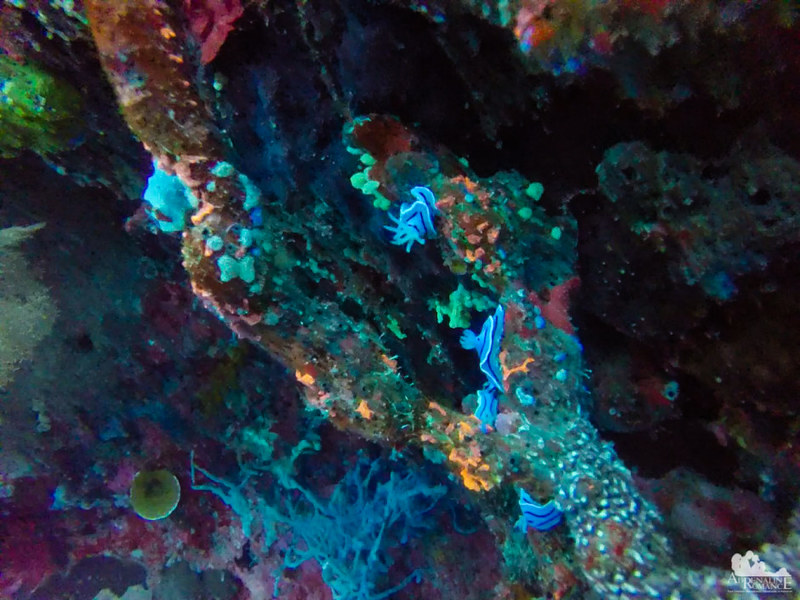

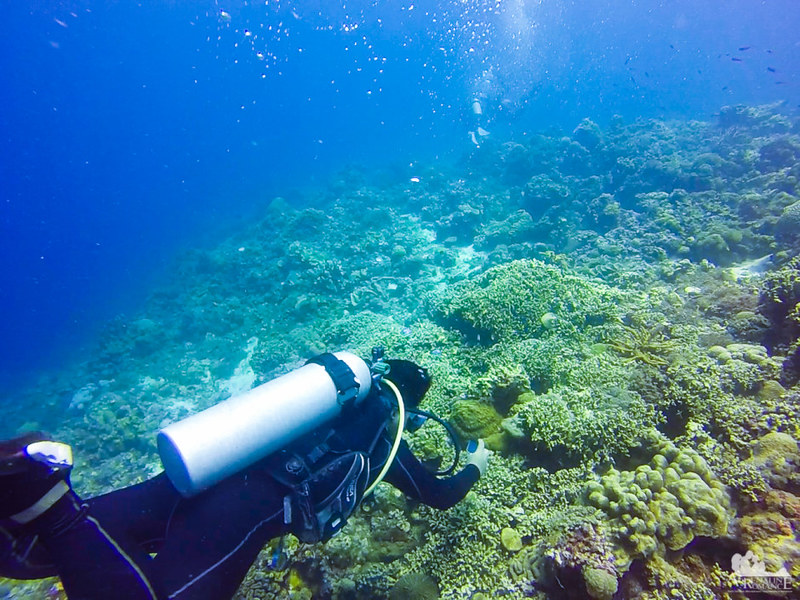
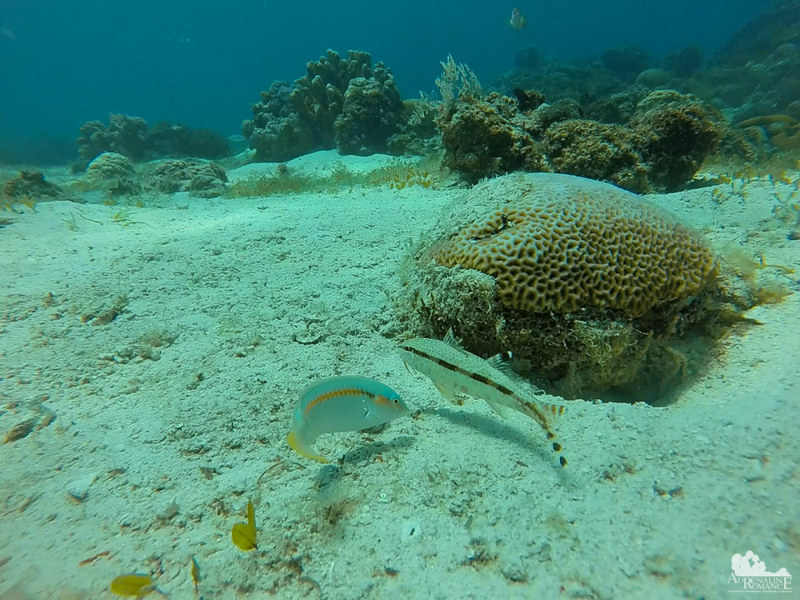
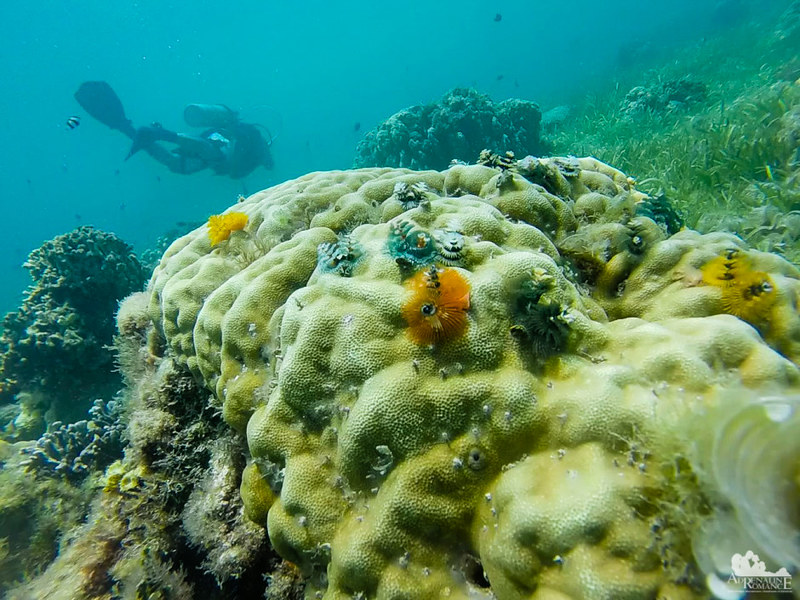


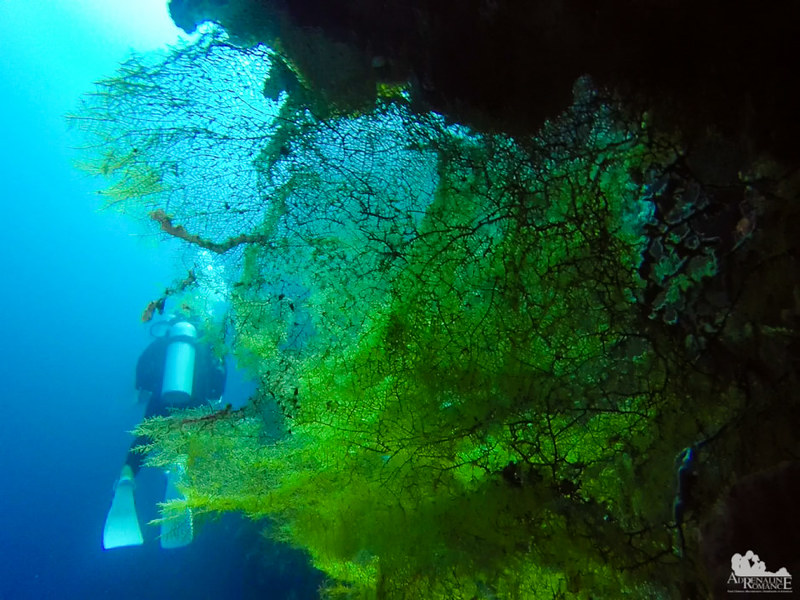



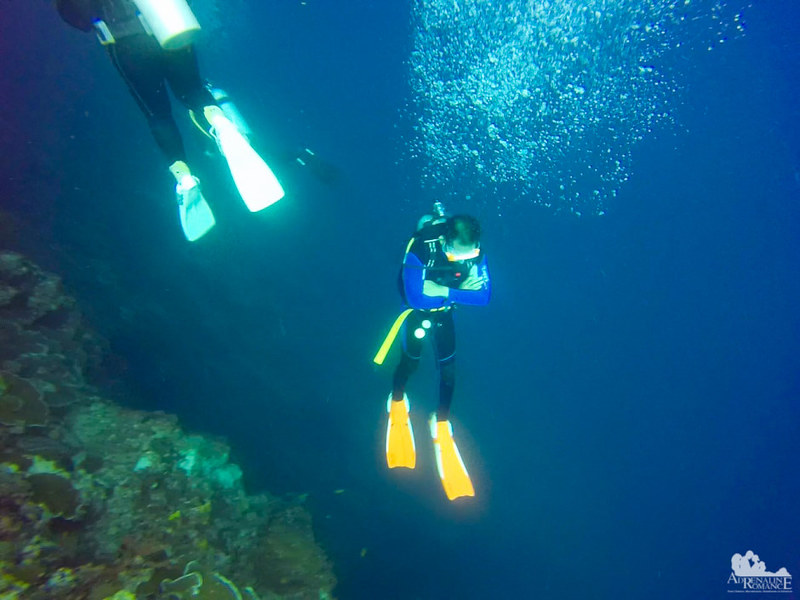
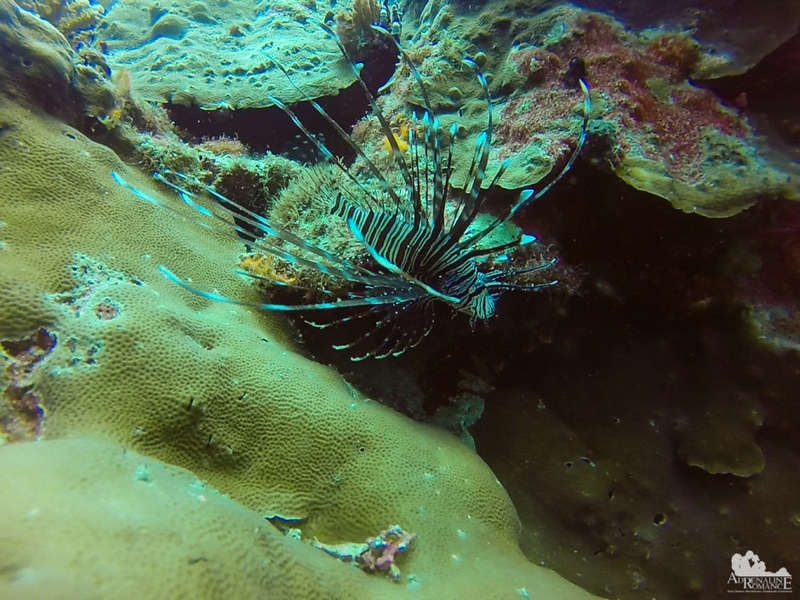
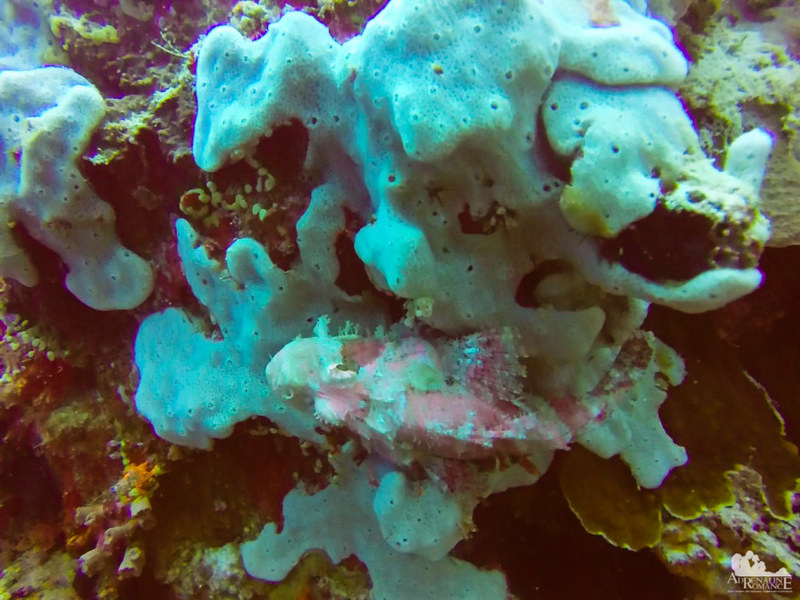

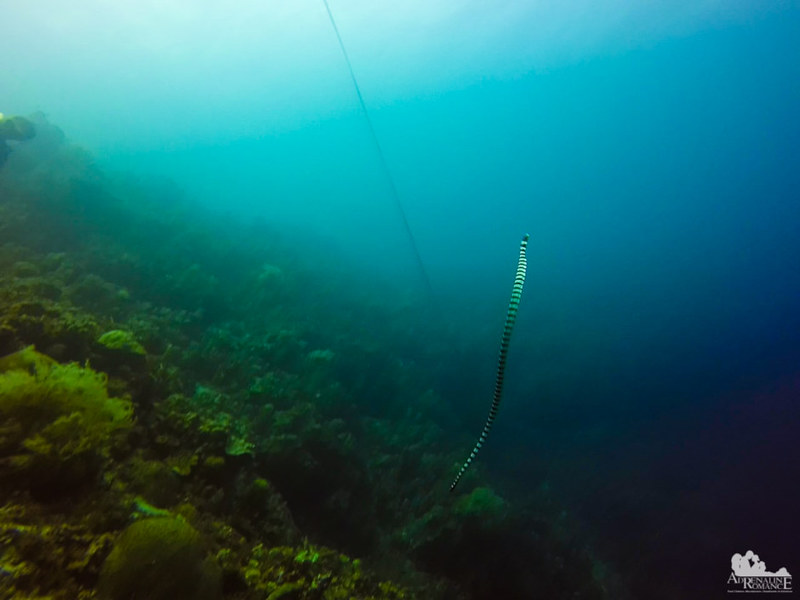

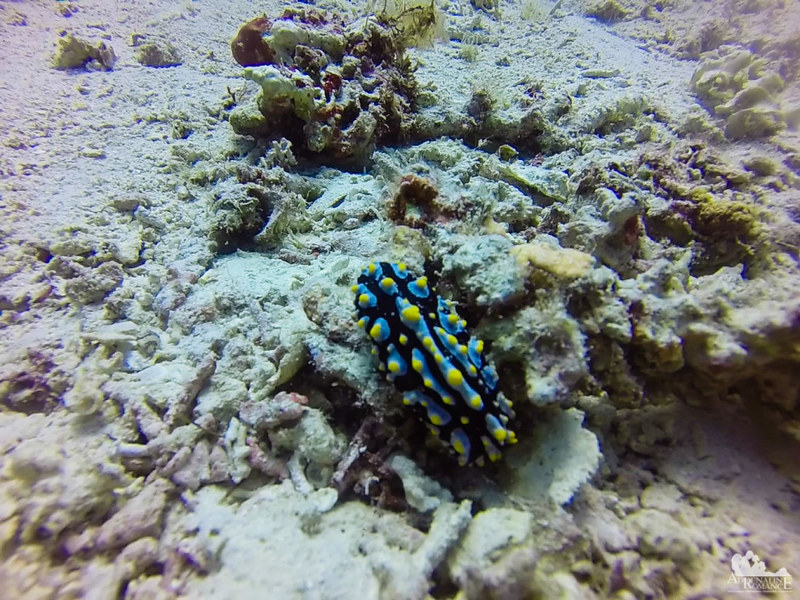
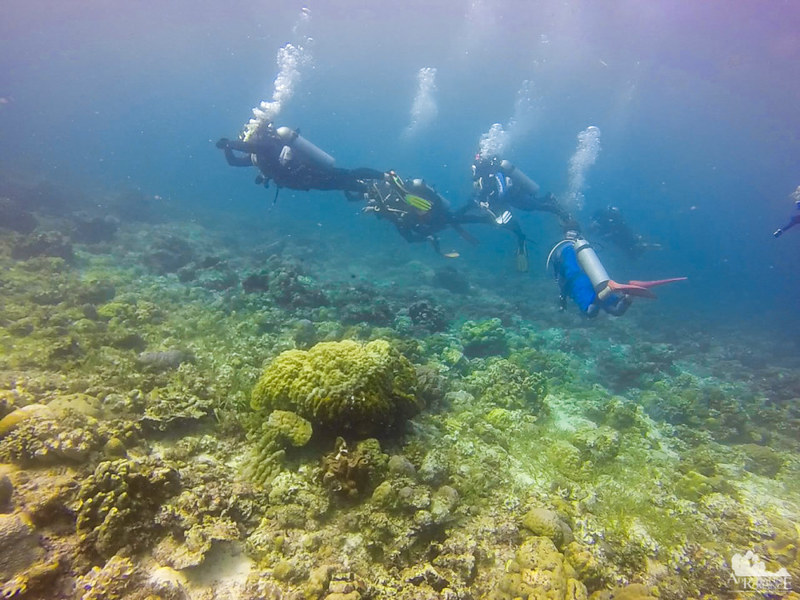
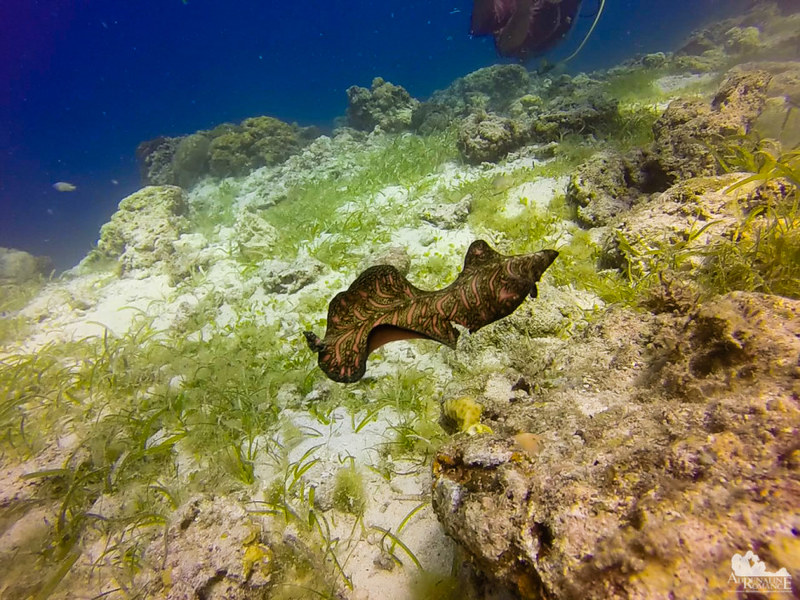


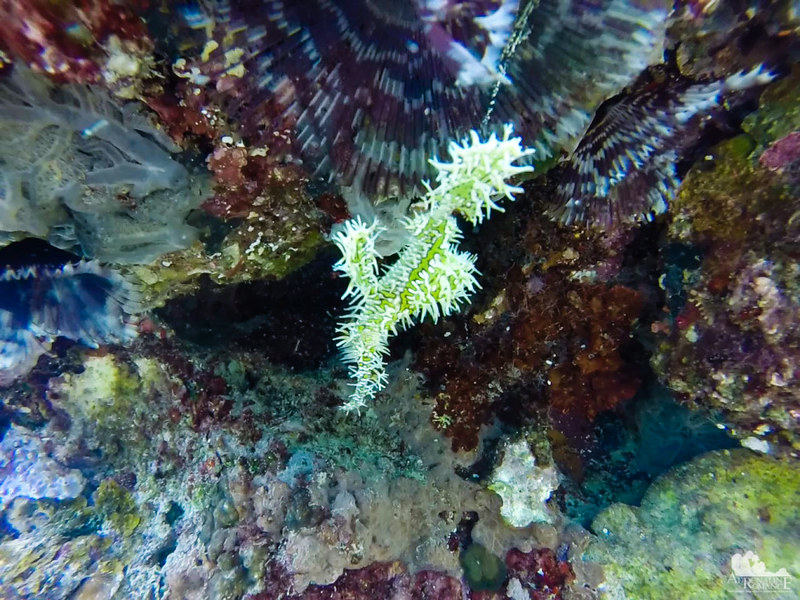
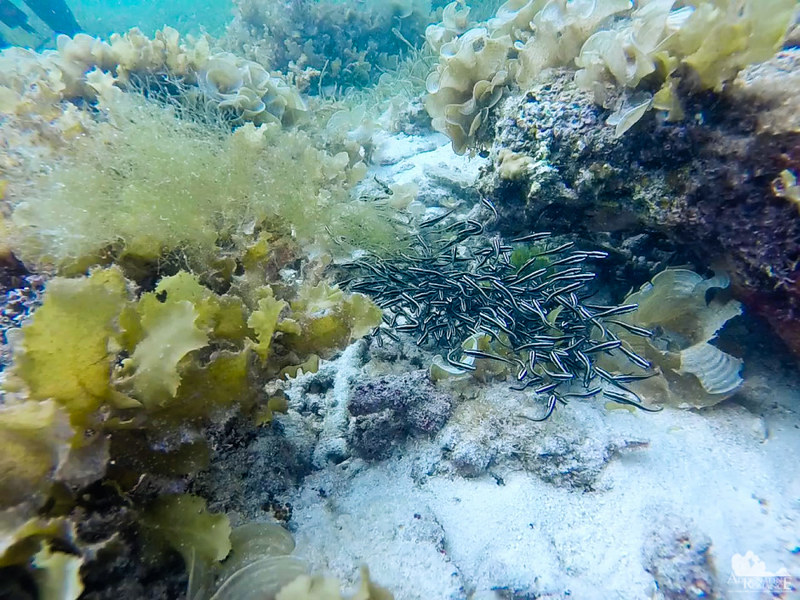
What dive sites do you recommend around Mactan in terms of biodiversity? 🙂
Hi Sherrie,
There are a lot; in fact, Mactan is a scuba diving paradise. There’s Kontiki, Dakit-dakit, Talima, and a lot more. Check out our Scuba Diving tab; we have a lot of featured dive sites there. 🙂
I’ve heard of the Japanese pufferfish before; you can die if it’s not cooked properly right? I’m in awe of your underwater adventures. I love all the different sealife you took photos of. Would love to see it for myself one day.
Hi Following the Rivera,
Yup! Pufferfish is really toxic due to the tetrodotoxin in their system. But minute amounts of tetrodoxin can cause euphoria and intoxication; this is why it is a prized delicacy in Japan.
Japanese fugu chefs are specifically trained and licensed to prepare the fish so that it can be eaten without harm sans the euphoric feeling.
Actually, these photos don’t do justice; the underwater scenery is 100 times more beautiful than what you see in these photos. We only took these images through a GoPro, which has a lot of limitations. We want to shoot underwater subjects and landscapes using real underwater photography equipment such as a waterproof casing, DSLR camera, and strobes. But such equipment is just so darn expensive. 😦
I’ve never been diving before and you’ve definitely planted that seed in my head again. I’m really nervous about equipment malfunction. How did you get over being afraid?
Hi Retha,
Do try to scuba dive. It’s really amazing! About equipment malfunction, it can happen. That’s why if you decide to fully indulge in scuba diving, then you really have to undergo certification. Certification involves training on emergency and safety rules, which include protocols on what to do when a piece of equipment malfunctions.
Panic is the worst enemy in scuba diving. Many divers actually perished due to panic; they forgot what they’re supposed to do.
In our case, we just kept calm, remembered our training, and disconnected the inflator hose.
Look at all those weird things at the bottom of the sea! Beautifully weird! I have this weird thing about sea water but have always wanted to go diving but have never been brave enough. One day!
Hi Kellee,
Haha! You’re definitely right. They’re beautifully weird. 🙂
Beautiful photos …
Thank you so much Ted! 🙂
Wow this looks like an amazing dive! Those sea fans and florescent corals (not 100% sure what they are?) look cool. I’ve not dived in years, I’m really hoping we can get a couple in on next trip.
Hi Aysha,
Thank you! The corals here are amazing, considering that this is a high-traffic area for both boats and divers. 🙂
What a crazy planet we have. Such cool creature you managed to see even in your first couple of dives! I definitely need to get certified… Snorkelling just doesn’t cut it after seeing some of these photos haha.
Hi He and She Travels,
How right you are! And to think this alien place is just right here in our own planet!
Snorkeling is fun, yes, but diving is a whole new level of fun, thrill, and adventure altogether. 🙂
We suggest you do a DSD (Discover Scuba Diving) session first before going for certification. DSD gives you a sense of what scuba diving is all about. If you like it, decide to make diving your passion, or plan to dive frequently, then you can go for certification. 🙂
I have done my DSD in Koh Tao, Thailand. But this place also looks killer with such a great variety of flora and fauna to see underwater. Buyong Marine Station is definitely a cool site for scuba. Great to know that you guys had a great time there.
That’s great! Let us know when you visit here in the Philippines. We would definitely love to dive with you.
I’ve heard of the Japanese pufferfish before – that you can die if it’s not prepared on a right way, I know that their chefs are trained well, but I read that there were cases when people died. But, nice pictures! 😀
Hi Traveloptician,
Yup! The delicacy is called fugu and it’s supposed to give you a euphoric feeling due to the small doses of tetrodoxin.
We saw this documentary about fugu. The show mentions that if you eat in a well-established and reputable fugu restaurant, then you’re safe. Questionable restaurants—-don’t risk it.
Thanks for the compliment about the photos. They are just taken with an old, phased-out GoPro Hero 3 Plus with a red Polarpro filter. We desperately want a better camera system, but underwater photography equipment is soooooooo expensive.
My brother is an underwater photographer and he does use a DSLR camera and all the lights and protective covering. Yes it cost him an arm and a leg but his photographs are phenomenal. Unfortunately he does not have a Blog which I have been encouraging him to do. There are times that I actually do feature his work on my blog. Perhaps soon I will again do so. So many people absolutely are in awe of his work. It must be such a thrill to do what you do! 😁
Hi AmyRose,
We envy your brother for having that cool underwater photography system. Yes, equipment like that costs a lot; that is very difficult for us to attain considering that we’re just employees. We have to make do with a GoPro, which is very limited especially if taking macro shots. We hope that someday, we’ll be able to save some extra money to buy a good underwater photography system.
Continue encouraging your bro to make a blog. There are only very few scuba diving blogs in the Net.
My brother is too busy unfortunately. I will do my best to get some of his fantastic work up on my blog. I really should make a page just for his work. Hmmmmm ….. That’s an idea!
That’s great! Looking forward for that page. 🙂
As you will see with my oncoming post, we are very busy right now so just be patient with me to get to that page. Thank you! 😎
Hi Amy,
Nice, nice! 🙂
Here is one of my posts I did with my brother’s phenomenal photography …. https://herladypinkrose.wordpress.com/2018/01/30/the-philippines-2014-15-images/
beautiful, this is good for someone who is afraid to get underwater – thats me 🙂
thanks for sharing the photos.
Hi Jamil,
Thank you! But please do try out scuba diving. It’s really great! You can overcome your initial fear. 🙂
What a beautiful and, as you say, “alien” world.
Hi Mitch,
Definitely! That alien world is what got us addicted to scuba diving. 🙂